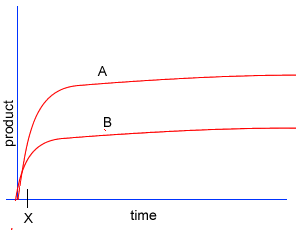The rate of reaction refers to the amount of product produced in a given time e.g. 10 micrograms of product per minute.
Enzymes are proteins coded for by DNA which increase the rates of chemical reactions in cells.
The graph shown on the right shows the production of product over time with and without an enzyme present. As shown, in the absence of an enzyme the reaction proceeds at a steady, relatively, slower rate. With an enzyme present the reaction rate is significantly increased and the end point is reached sooner than an uncatalysed reaction.
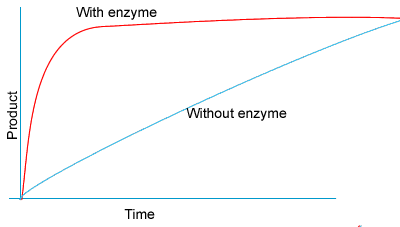
The graph on the right shows the formation of product using an enzyme catalysed reaction. Two reactions are carried out in seperate containers A and B start off with identical amount of substrate. The graph of product formation versus time is shown on the right for both reactions..
What has happened at the 1 minute mark in container A?
Why does the blue line plateau after 2 minutes?
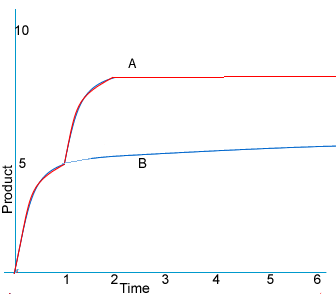
Consider the graphs shown on the right. Each graph shows the amount of product formed over time in three enzyme catalysed reactions of the same substrate and enzyme. The volume, amount of substrate and temperature are all kept constant in each reaction.
Which best describes the difference between the three graphs?
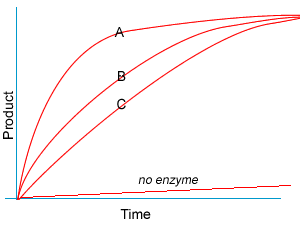
Consider the graphs of two identical, enzyme catalysed reactions shown on the right. Which is the best explanation for the difference in the two graphs?
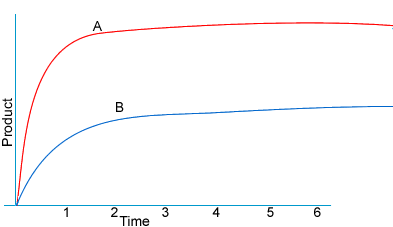
The graph on the right shows the amount of product formed over time by two reactions. The reactions are not catalysed by an enzyme and are similar but for one variable.
Which is the likely variable?
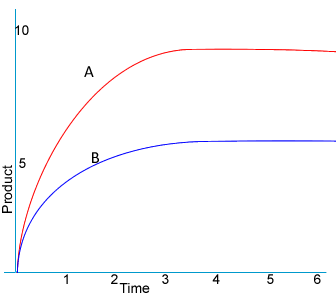
Consider the graphs on the right of an organic reaction. Graph A represents the formation of product of the reaction in the absence of an enzyme and at room temperature. The amount of product is plotted over time.
Which graph is consistent with:
- the presence of an enzyme and a non-competitive inhibitor?
- the presence of an enzyme and a competitive inhibitor?
- the presence of enzyme?
- the absence of an enzyme and an increase in temperature
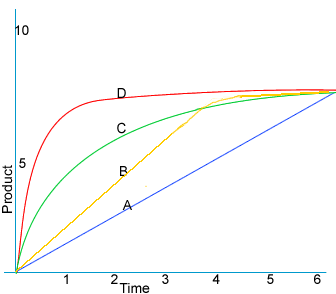
Graph A represents the formation of product over time of a reaction catalysed by an enzyme. What is the likely event that took place at time X if graph B represents the same reaction as graph A.
